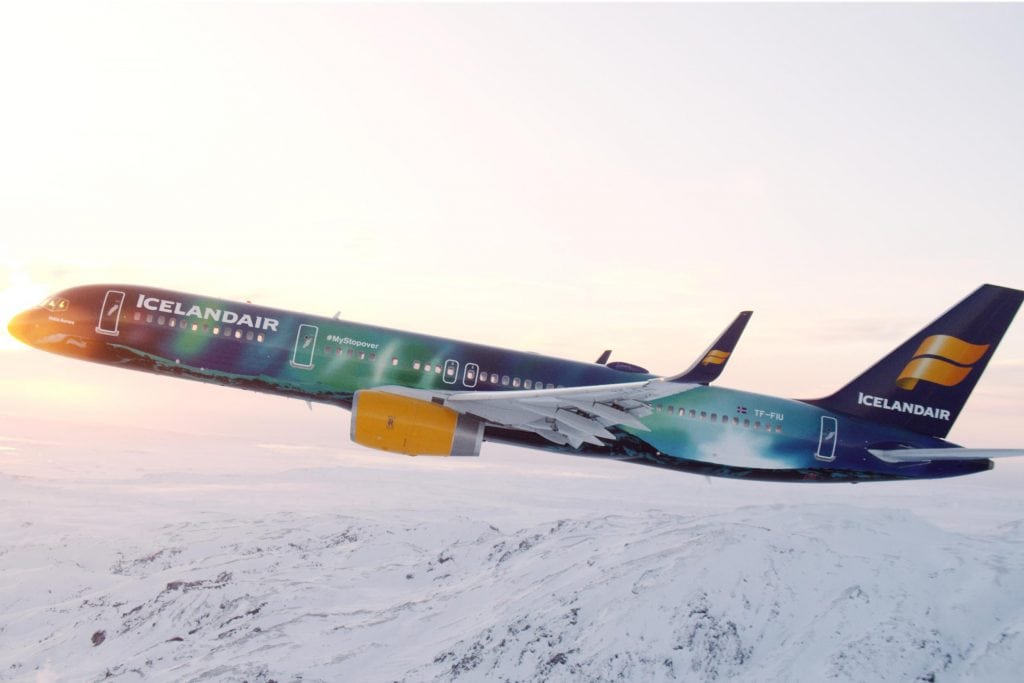Skift Take
Iceland should be a good air market right now. But increased competitive capacity is putting major pressure on Icelandair. The carrier's new CEO is going to have to find a way to get the airline back on track.
Iceland may be one of the world’s hottest tourism markets, but the country’s leading airline is performing worse than expected, particularly on North American routes. Its CEO took the blame this week, resigning after the company announced it expects to report weaker-than-expected financial results for the year.
Despite its small population, Iceland probably should be a stronger market than ever. It’s a place people want to go, and a logical stopping point for travelers flying between the United States and Europe.
But the dynamics of the market have changed markedly in the past five years, as carriers have dumped capacity into the country. Foremost, Icelandair and its newish local low-cost competition, Wow Air, have been on a U.S. growth binge, fighting over passengers in several cities, including Cleveland, Dallas/Fort Worth, New York, and Baltimore.
Meanwhile, U.S. carriers — which had long ignored Iceland — have been adding their own flights to the destination, while also lowering fares on transatlantic routes.
With American Airlines, Delta Air Lines, and United Airlines now offering basic economy fares across the Atlantic, many customers no longer need to connect at Keflavík International Airport to save money.
All of this is hurting Icelandair. This week, it reported its passenger revenue would be 5 to 8 percent lower than expected, roughly equating to between $50 and $80 million. It also said its earnings before interest, taxes, and amortization would be $80 to $100 million, far below the $170-$190 million it had once projected.
Björgólfur Jóhannsson, Icelandair Group’s president and CEO, said Monday he would take the blame and resigned, even though he said the company’s business likely will recover next year. “The decisions … were made during my shift and it is clear that they have had negative financial impact on the company this year,” he said.
New Capacity
Under Jóhannsson, Icelandair was aggressive in adding capacity and new U.S. markets. That strategy might have worked out OK had other airlines not done the same thing. But in recent years, many airlines have been adding seats faster than the market can absorb them.
In 2018, Icelandair has added San Francisco, Cleveland, Dallas/Fort Worth, Baltimore, and Kansas City to its network, while Wow has begun flying to New York JFK, Cincinnati, St. Louis, Dallas/Fort Worth, Cleveland, and Detroit, according to CAPA Centre for Aviation, an industry analysis firm.
At the same time, American has defended its Dallas/Fort Worth hub by adding its own flight to Keflavík, and United recently started flying there from Newark.
“It is straightforward,” said Mark Drusch, a vice president at ICF, a consulting firm. “There is too much capacity,”
In its recent report, CAPA said seating capacity between Iceland and North America increased roughly 28 percent year-over-year in July. And since 2013, CAPA said, weekly capacity is up nearly 300 percent.
The new competition has forced Icelandair to lower fares to fill seats, and even then, its load factor has suffered. In July, its load factor on North America flights was 81.9 percent, a decrease of roughly 9 percentage points, year-over-year.
“Icelandair Group is feeling the pinch after six years of relentless growth by Wow Air,” CAPA said in its report.
In a statement this week, Icelandair said it had expected fares would increase after this summer’s peak, if only to keep pace with higher fuel prices. But the carrier said the fare environment has yet to improve.
“Now,” it said, “we expect the rising of average fares to occur later, that is not until in 2019.”
European flights are still performing well, Icelandair said, with load factors over 90 percent. But in part because of competition with Wow Air, Icelandair has been shifting greater focus to the United States, which has hurt overall revenues.
Strategy Shift?
Jóhannsson’s successor will have a tough job.
In addition to the problems the extra capacity creates, Icelandair is also facing increased pricing competition on one-stop itineraries between the United States and Europe.
Not long ago, U.S. and European carriers mostly ignored Icelandair’s cheap fares between continents. Legacy airlines figured travelers who bought them were bargain-seekers they didn’t need to attract.
But within the past year, Drusch said, that calculation has changed. The larger U.S. airlines and their European partners have been deploying versions of their no-frills basic economy fares on transatlantic routes. The fares often make a legacy carrier’s price competitive with Icelandair’s one-stop itineraries.
“Before, there was a segment of the market they could carve out as a niche and the U.S. carriers didn’t compete with them on that low-end connect fare,” Drusch said. “Now, there is a lot less distance between the Icelandair connect fares and a basic economy fare.”
To avoid some transatlantic competition, Icelandair may expand east. India is probably an obvious first destination — Wow Air will fly there soon —and Jóhannsson hinted earlier this year elsewhere in Asia might be possible.
Iceland is a decent connection point between much of the United States and India. But if Icelandair expands further — perhaps to East Asia — the airline would lose much of its geographical advantage.
“India is OK, but if you fly from Kanas City to Iceland to [East] Asia, it’s not the same benefit as when you are flying someone from the U.S. to Europe,” Drusch said. “It’s not exactly in their sweet spot.”
The Daily Newsletter
Our daily coverage of the global travel industry. Written by editors and analysts from across Skift’s brands.
Have a confidential tip for Skift? Get in touch
Tags: airline innovation, iceland, icelandair, wow air
Photo credit: Icelandair has cut is revenue projections for the year. Pictured is one of the airline's Boeing 757s. Icelandair
